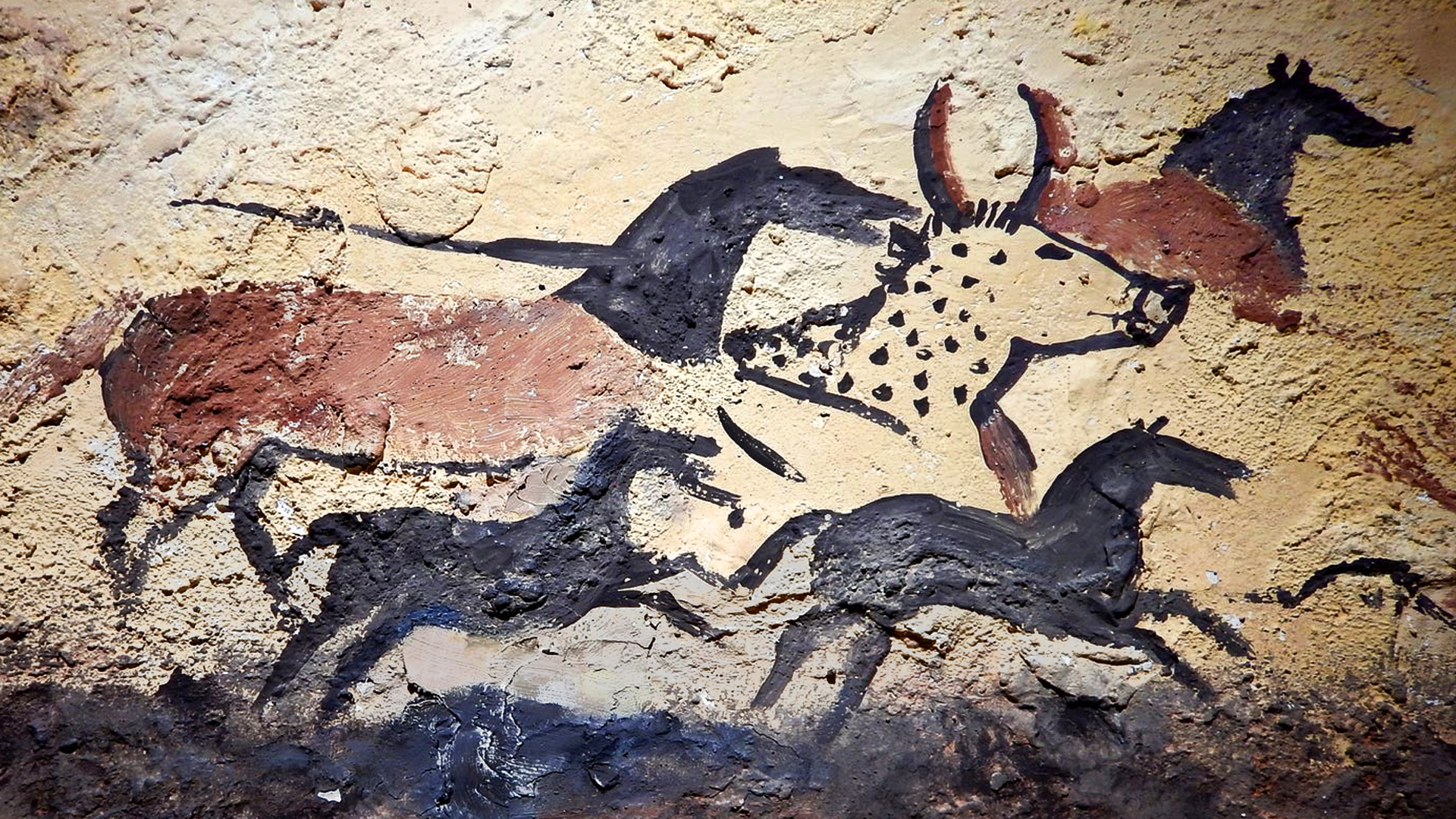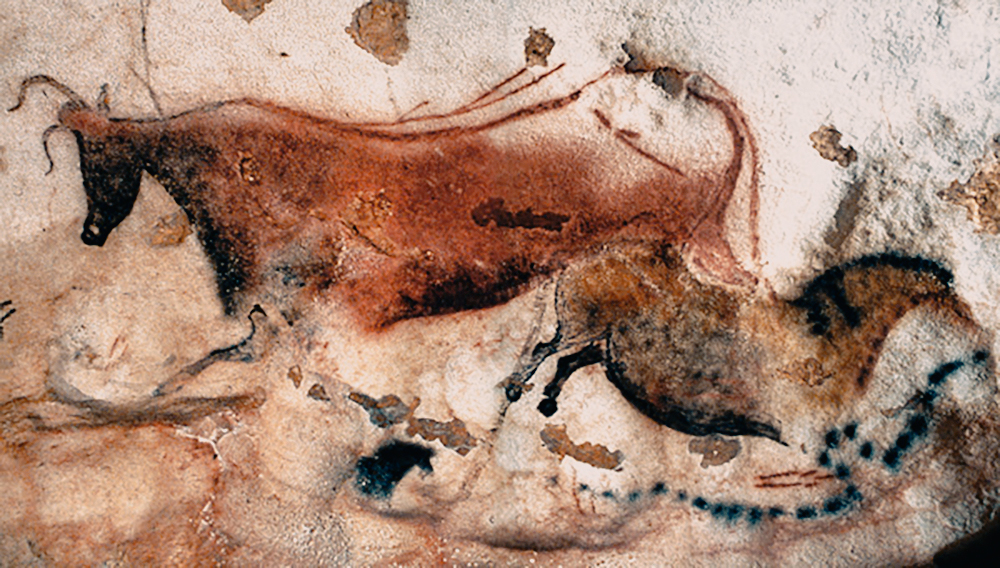Discovery of the Lascaux Cave Paintings

The Hall of the Bulls inside the Lascaux caves in France, with giant aurochs painted in sweeping black lines.
What Happened?
On a September day in 1940, four boys near the village of Montignac, France, followed their dog into a hidden opening in the earth. Inside, their lanterns lit up walls covered in animals—giant bulls, galloping horses, and leaping stags—images that had been waiting in the dark for 17,000 years.
The cave they discovered, now known as Lascaux, was enormous—more like an underground cathedral than a simple cavern. Its walls held nearly 600 painted animals and symbols, along with over 1,000 engravings carved into the stone.
The animals were depicted in incredible detail and motion: bulls over 17 feet long, stags with branching antlers, and even a mysterious bird-headed man. The artists used minerals for color, torches for light, and imagination that rivaled any modern painter.
Archaeologists believe the caves were more than decoration—they may have been sacred spaces for rituals tied to hunting, survival, or spiritual beliefs. Some scholars see the paintings as early storytelling, others as attempts to influence the success of a hunt.
The discovery quickly became famous, and by 1948 the caves were open to the public. Thousands flocked to see them, but the lights and human breath damaged the fragile images, causing algae and mold to grow.
To protect them, the caves were closed in 1963, and replicas were built nearby so people could still experience their beauty without risking the originals. Today, Lascaux is a UNESCO World Heritage Site and a reminder that art is as old as humanity itself.
The story of the boys who found the cave is also bittersweet. Two of them were swept into the tragedies of World War II, with one deported to a concentration camp. Others later served as guides and guardians of the caves they had helped uncover.
The paintings belong to the Magdalenian culture, people who lived in Europe during the last Ice Age. They hunted bison, horses, and deer, yet chose not to depict reindeer—their main food source—sparking debate over what the art meant to them.
Among the most famous images are the 'Crossed Bison,' whose overlapping legs show that even 17,000 years ago, humans understood perspective. The skill and creativity captured in Lascaux challenge the idea that prehistoric people were “primitive.”
Even today, scientists and artists debate the meaning of the paintings. Were they spiritual, educational, or simply artistic expression? Whatever the answer, Lascaux reminds us that the human urge to create, imagine, and leave a mark is timeless.
Why It Matters
The Lascaux cave paintings show that humans have always been storytellers and visionaries. Long before modern civilization, people used art to connect with nature, express ideas, and pass down culture. Preserving these works is more than saving old paintings—it’s protecting proof of our shared human creativity and imagination.
?
Why do you think prehistoric people painted animals they didn’t eat, like bulls and horses, instead of reindeer?
What does the discovery of Lascaux tell us about the intelligence and creativity of early humans?
Why was it necessary to close the real caves to the public in 1963?
How do replicas and digital tools help balance preservation with education?
In what ways is art a form of survival or communication across time?
Dig Deeper
A look at the remarkable prehistoric cave art of the Dordogne region, including the Lascaux caves, created between 18,000 and 10,000 B.C.
Related

American Revolutionary War: From Protest to a New Nation
How arguments over taxes and rights grew into an eight-year war—and how ideas, allies, and perseverance turned thirteen colonies into the United States.

The Enlightenment: Revolution of the Mind
The Enlightenment wasn’t just an era of smart people in powdered wigs—it was a radical shift in how humans understood power, truth, and their place in the world. Its ideas fueled revolutions, rewrote constitutions, and laid the intellectual bricks of modern democracy.

Fascism: Power, Propaganda, and the Fall of Democracy
Fascism emerged from the ruins of World War I and found its foothold in fear, nationalism, and economic despair. It promised unity, but delivered control, conformity, and catastrophe.
Further Reading
Stay curious!
